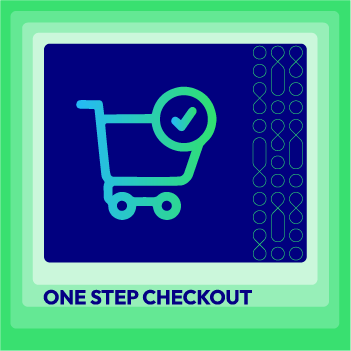What Is Cross-Selling? Everything You Need To Know

When businesses want to increase revenue, they need to find ways to develop an effective sales strategy. The seller really made a mistake in assuming that a customer’s potential ends after their initial order. There are many opportunities to generate additional revenue during and after the purchase. Cross-selling opens many opportunities for extra revenue while enhancing customer satisfaction.
In this article, we will explore what cross-selling is, how it works, its advantages and disadvantages, and everything you need to know to maximize sales.
What is Cross-Selling?

Cross-selling is a sale technique in which the seller encourages customers to purchase additional products along with their initial purchase. The seller will highlight the added value these extra products bring to the item they already bought.
For example, if you buy an iPhone 15 Pro Max, the seller might suggest you buy a screen protector or a protective case. This strategy will help to increase sales value by offering complementary products that enhance the customer experience.
Key Takeaways
- Cross-selling is considered one of the most effective methods to increase revenues. It sells related or complementary products to a customer.
- To ensure client satisfaction and long-term loyalty, complementary products should match the advisor’s skills and knowledge.
- Distinguishing between cross-selling and up-selling helps businesses optimize their sales strategies and increase customer lifetime value.
- Upselling is a sales strategy in which clients are encouraged to buy a more advanced or premium version of a product or service.
- To succeed in cross-selling, you need to understand your customers’ needs and offer complementary products that add value. Then, it is necessary to build trust by ensuring the additional products bring benefits to customers and follow up to maintain a strong relationship.
How Cross-Selling Works

Cross-selling to existing clients is considered the main way for businesses to generate new revenue. It’s one of the easiest growth strategies because the business already has a relationship with the client and understands their needs and goals.
However, you need to implement the cross-selling strategy carefully. It’s crucial that the products or services offered match the advisor’s expertise. Selling a product outside of one’s knowledge, like a financial advisor recommending a mortgage, can be risky. Such actions can lead to client dissatisfaction and may damage the business relationship.
When done correctly, cross-selling can bring highly profitable. Professionals like stockbrokers, insurance agents, and financial planners can significantly boost their earnings by offering complementary products. For example, licensed income tax preparers can cross-sell insurance or investment products to their tax clients. This approach not only meets the client’s needs but also enhances their overall financial planning.
Thus, cross-selling is not just a sales tactic; it’s a strategic business practice. When executed properly, it can lead to substantial profits and long-term client loyalty.
Key Differences Between Upselling and Cross-selling
Cross-selling and upselling are both sales strategies used to encourage customers to purchase more, but there are some differences that you need to consider:
Objective
-
Cross-Selling: The primary goal of cross-selling is to increase the overall order value by suggesting complementary items to customers.
-
Upselling: Upselling is to encourage customers to buy an updated, more expensive version of the product than they originally intended. To upsell successfully, you need to demonstrate to customers that the higher-priced option offers greater value. The objective is to increase the average transaction value by convincing customers to select a premium product.
Customer Perception
-
Cross-Selling: Customers often perceive cross-selling as helpful and value-adding because it recommends products that go well with their initial purchase. This can improve their shopping experience by highlighting items they might need or find useful. For example, suggesting a protective case for a new phone can be seen as a considerate recommendation.
-
Upselling: Upselling can sometimes be perceived as pushy if not done carefully. Customers might feel pressured to spend more than they planned. Therefore, it’s crucial to approach upselling with sensitivity, ensuring that the higher-end product genuinely meets the customer’s needs and offers clear benefits. For example, pointing out the longer battery life and better camera quality of a more expensive phone model can make the upsell become more justified.
Sales Process

- Cross-Selling: Cross-selling occurs after the customer has decided to make a purchase. It often appears as a suggestion during the checkout process or in follow-up communications. For example, after adding a camera to their cart, a customer might see recommendations for memory cards, tripods, or camera bags.
- Upselling: Upselling can happen at any stage of the buying process. It might occur when the customer is browsing products, during the product selection phase, or even at checkout. For instance, when a client views a product page, they might see a comparison chart emphasizing the benefits of a premium model.
Implementation Strategies
-
Cross-Selling: Effective cross-selling strategies include bundling products, offering discounts on complementary items, and using personalized recommendations based on the customer’s purchase history. For instance, e-commerce platforms often use algorithms to suggest products that other customers frequently buy together.
-
Upselling: Successful upselling means showing customers why a higher-end product is worth the extra cost. To do this, use detailed product descriptions, positive customer reviews, and clear comparisons with other options. Sales representatives should also understand what the customer needs and suggest the best premium product that fits customer needs.
Here are some typical examples that highlight the difference between cross-selling and upselling:
Coffee Store
-
Cross-selling: Suggesting a pastry or sandwich when a customer orders a coffee.
-
Upselling: Offering the same coffee type but with a larger size coffee or a premium coffee blend with extra flavors.
Fitness Center
-
Cross-selling: Offering personal training sessions or fitness classes to members who sign up for a gym membership.
-
Upselling: Recommending a premium membership that includes access to exclusive facilities, such as a spa or swimming pool, and additional perks like free guest passes.
Online Clothing Store
-
Cross-selling: Recommending accessories like belts, scarves, or jewelry when a customer buys a dress.
-
Upselling: Proposing a more expensive dress made from higher-quality fabric or with additional features like custom tailoring.
Pros And Cons of Cross-Selling

Cross-selling offers numerous benefits when executed properly. However, like any sales tactic, it also comes with certain challenges. Here are the main pros and cons of cross-selling that you should consider when deploying your strategy.
Pros of Cross-Selling
Increased Higher Customer Lifetime Value (CLV)
The next main benefit of cross-selling is that it helps increase customer lifetime value (CLV), which is the total revenue a customer generates for a business through their relationship.
When customers feel that a business understands their needs and offers relevant products, they will be trusted and stay loyal to the business. This loyalty leads to more purchases over time, which increases CLV and generates more long-term revenue for the company.
Revenue Boost
By providing additional products or services that complement the original purchase, businesses can boost their sales and profits. According to McKinsey reports, cross-selling can increase sales by 20% and profits by up to 30%.
Enhanced Customer Satisfaction
Cross-selling, as a sales strategy, involves recommending complementary products that increase the customer’s original purchase’s utility, satisfaction, and durability. For example, a first-time camera buyer will likely receive benefits from a tripod and camera bag, which not only enhance their photography experience but also extend the equipment’s lifespan.
When conducted well, cross-selling will offer customers a great experience. It makes them feel more understood and leaves them pleasantly surprised by the relevant suggestions.
Product Visibility Increase
Cross-selling is an effective strategy to enhance product visibility by showcasing related items in strategic locations throughout the shopping process. By placing related products where customers are likely to see them, you can attract their attention and encourage them to explore additional items they might not have initially considered.
Cons of Cross-Selling

Customer Annoyance
The boundary between offering a useful recommendation and becoming an unwelcome annoyance is very thin. When customers feel bombarded with irrelevant or overly persistent offers, cross-selling can annoy customers. Pushy or irrelevant cross-selling attempts can damage the relationship with the customer.
Complexity and Distraction
Offering too many cross-sell options can overwhelm customers, which makes it difficult for them to make a decision. This overload of choices can lead to confusion, causing customers to feel uncertain about their purchase. As a result, they might abandon the transaction.
Negative Perception
If customers perceive every transaction as an attempt to upsell unnecessary products, they may start to view the business as solely focused on profit. This perception can harm the brand’s reputation and decrease the chances of future engagement.
Data and Personalization Challenges
Effective cross-selling requires analyzing customer data and creating personalized offers. This process involves collecting, cleaning, and interpreting large amounts of data, which can be time-consuming and complex.
Personalizing offers based on this data adds another layer of complexity. It requires advanced algorithms and constant monitoring to keep up with changing customer behaviors. This level of personalization needs large resources, including advanced technology and skilled staff.
How Is Cross-Selling Ethical?

Cross-selling can be ethical when it focuses on the customer’s benefits. Here are some main points to ensure ethical cross-selling.
Customer Value
When you’re cross-selling, it’s all about making sure your customers get what they really need. If you only focus on increasing sales, you will decrease customer satisfaction. You need to ensure every recommendation genuinely adds value to the customer’s purchase.
Natalie Hogg, president and head of marketing at Method Q, emphasizes that if cross-selling products or services offer added value and improve the customer’s overall experience, it becomes less about selling. Instead, it focuses more on problem-solving. The focus should be on the customer’s benefits, not what the salesperson needs to sell.
Respect for customers’ choices
It’s really frustrating when a sales staff rep tries to sell the item you’re not interested in. In such cases, the seller needs to respect customers’ decisions when they refuse cross-selling offers.
During the cross-selling process, sales staff must always be alert to both verbal and non-verbal signals, such as hesitation or lack of interaction, which may indicate customer discomfort. For instance, if a customer begins to avoid eye contact or responds with minimal interest, it is often more effective to divert the focus to delivering excellent service and building rapport.
By applying this approach, businesses can ensure that any future attempts at cross-selling will be more warmly received because it is built on trust and mutual respect.
Transparency
It’s important to be honest about what the product can actually do. You should not exaggerate its features. If there are any limitations or drawbacks related to the additional products, mention them and offer solutions.
As Yaz Hanley, a business development manager, said, when sellers are transparent about the value and costs of additional products, they can build trust and help establish a long-term relationship with their customers, which is far more valuable than a one-time sale.
Long-term engagement maintenance
The business should stay in touch with your customers throughout the year, not just when you want to sell them something extra. Sienna Quirk, the CMO at Invisory, highlights the importance of regular engagement. If customers only hear from you during renewal season, it can seem like you’re only interested in their money. By maintaining a regular schedule of sharing valuable content, your audience will engage naturally and interact more frequently.
FAQs
1. What are real-world examples of cross-selling?
Here are 3 real-world examples of famous brands that help to inspire your strategy:
- **Amazon: Amazon is a typical example of cross-selling with its “Frequently bought together” section. It suggests complementary products to customers based on their current selections.
- **Starbucks: This brand uses its mobile app to suggest food items that pair well with the customer’s chosen beverage. Thus, Starbucks can increase the average transaction value.
- **Netflix: Netflix recommends additional shows and movies based on the user’s viewing history, which helps keep customers engaged with the platform.
2. How to cross-sell products to customers?
The most important part of any cross-selling strategy is to identify products or services that complement each other. After that, you need to recognize which customers will most likely benefit from these combinations. This approach ensures that cross-sell offers are relevant and valuable to the customer.
3. What are effective cross-selling techniques to boost success?
Some effective cross-selling techniques involve bundling related items at a discount and using customer data to adjust suggestions. Offering products at the right time, such as during checkout or in follow-up emails, and showcasing how additional products enhance the original purchase can also boost success.
4. What are the do’s and don’ts of cross-selling?
Cross-selling can be a helpful strategy to increase revenue and enhance customer satisfaction if you do it correctly. Here are some key do’s and don’ts to keep in mind:
Do’s of cross-selling:
- Offer Relevant Products: Ensure the additional products you suggest complement the original purchase.
- Educate Your Customers: Explain how the additional product can add value or solve a problem for the customer.
- Train Your Staff: Equip your sales team with the knowledge and skills to determine cross-selling opportunities and approach them effectively.
- Use Data and Analytics: Take advantage of customer data to make informed cross-selling recommendations.
Don’ts of cross-selling:
- Don’t Be Pushy: Avoid aggressive sales tactics that can make customers feel pressured or uncomfortable.
- Don’t Ignore Customer Feedback: Pay attention to customer responses and adjust your approach based on their response.
- Don’t Neglect Training: Ensure continuous training and development for your sales team to keep them updated on best practices and new products.
5. How can I measure the success of cross-selling?
You can measure cross-selling success by tracking key performance metrics, including Average Order Value (AOV), conversion rates on cross-selling recommendations, and customer feedback to gauge the success of your cross-selling efforts.
Conclusion
Cross-selling is a sales strategy that, when executed effectively, can boost a company’s profits and enhance customer loyalty. However, if done poorly, it can lead to reduced profits, unhappy customers, and a tarnished reputation. By clearly understanding cross-selling, businesses can create a win-win situation for both themselves and customers.







![Top 20+ Must-have Shopify Apps for 2025 [Free & Paid] - Mageplaza](https://cdn2.mageplaza.com/media/blog/must-have-shopify-apps/top-must-have-shopify-apps.png)
![[2025 Updates] Top 10+ Upsell Apps for Shopify - Mageplaza](https://cdn2.mageplaza.com/media/blog/best-upsell-shopify-app/cover.png)